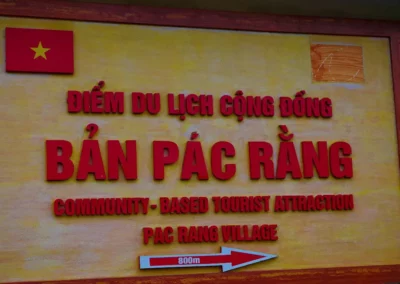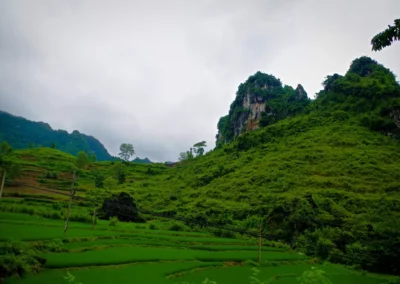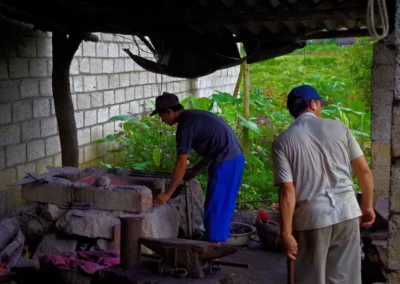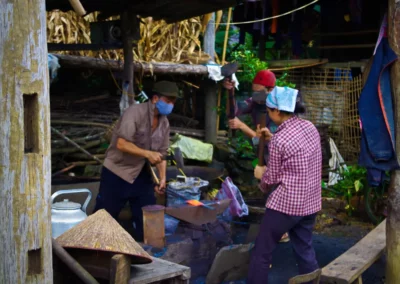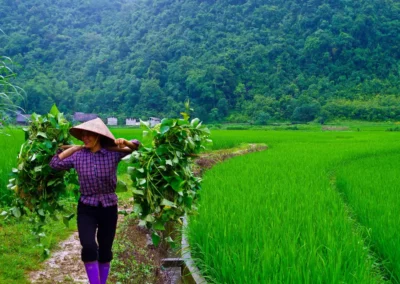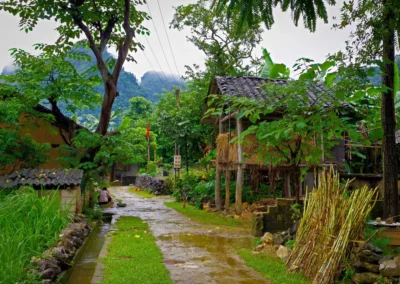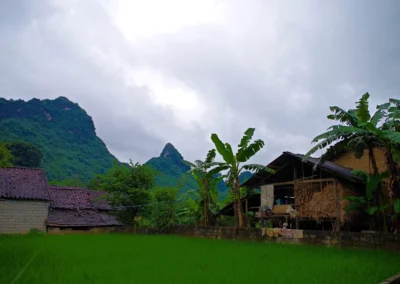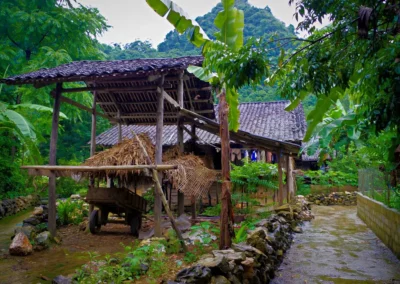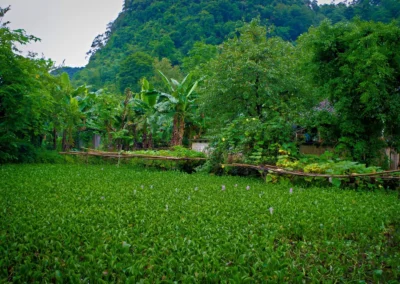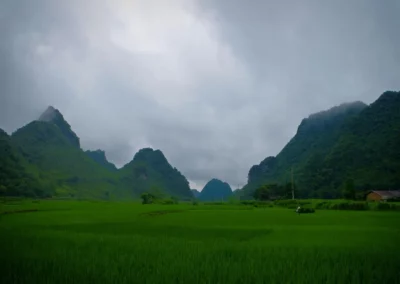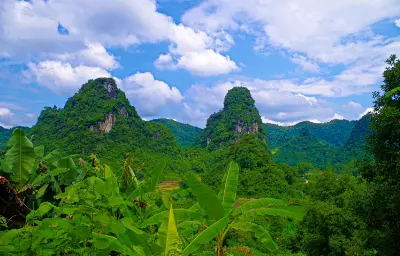From Hanoi, we head to Cao Bang by vehicle for a 300 km, 7-hour drive, still in the rain. We will then reach the border region of China. On our way, we will pass Thai Nguyen, which marks the end of the Vietnamese-populated plain to enter the Thô country. We will continue on a mountain road via the Cao Lac pass to enter the border territories, with a stop at a small cafe in the middle of nowhere to taste the local green tea. The locals are happy to offer you their homemade rice wine. Hold on tight !
In this region, the relief constitutes a real natural fortress on the three support points: Cao Bang - That Khé - Lang Son. Arriving in Cao Bang at the end of the day still with the rain, we will spend the night at the hotel.
The next day, departure in the morning for the Cao Bang market, where we can buy fruit for the hike.
After the market, we set off again by vehicle for a 70 km, 2-hour drive towards Ta Lung, a border crossing between Vietnam and China. Along the way, we visit a blacksmith village in Ban Pac Rang.
Arriving along the border for our backpacking trek, we cross the Bang Giang River on a reddish bridge. We take a path that plunges into increasingly wild landscapes with four hills to cross in rainy weather conditions that make the terrain quite difficult.
A midday picnic is not very comfortable in these conditions, and may even be tasteless.
At the end of our journey, a 5-hour walk that represents 14 km on uneven, slippery terrain and 515 m of elevation gain, we arrive at nightfall at a local's house. It's a family from the Thai community. Their house is built on stilts at the edge of a huge rice field. After cleaning our clothes and shoes by a small spring, we are invited to settle inside their house.
We will enjoy a typical Vietnamese dinner prepared from their own produce that they grow and the animals that they raise.
We will sleep on a small 3 cm mattress installed on suspended boards as a bed base, with a mosquito net to protect us from mosquitoes. Personally, I was not bothered by mosquitoes despite this very hot and humid environment.
Early in the morning, after breakfast, we put our still-damp shoes back on to take a track crossing villages and rice fields, sometimes quite dense river branches, given the monsoon period.
We take a steep climb to pass into an adjacent valley. We will encounter our first leeches.
We have lunch at a villager's house, isolated in this wild landscape. After this meal, we set off again towards the ridges through a very dense forest with a steep climb, the ground full of large stones camouflaged by very wet vegetation which makes this route very slippery. Our progress is slow, our guide cuts down the 2 meters of vegetation in front of us with a machete, he knows exactly where to go, he is a former soldier who knows the jungle perfectly. I have a fall without seriousness, just my shoulder is a little painful, but, when I get up my calves are biting me, I realize that about ten leeches are devouring each of my calves. I struggle to get rid of them and this will unfortunately continue as long as we are in this dense and wet vegetation.
Once we reached the summit, the descent was as difficult as the ascent. The terrain was extremely slippery due to the incessant rain, requiring poles to maintain our balance. I broke one, but I made it down without incident. Once the descent was complete, we crossed a river arm, and then we crossed the magnificent rice paddies of Ban Sao.
We arrive at a local's house just before nightfall. It took us more than two hours longer than expected due to the weather conditions, meaning we spent eight hours covering 16 km and 555 meters of elevation gain. Our hosts' house is on one level, with dirt on the ground. Chickens and pigs roam around and sometimes fight over food. The meal is excellent. We spend the night on suspended planks with a 3 cm mattress.


